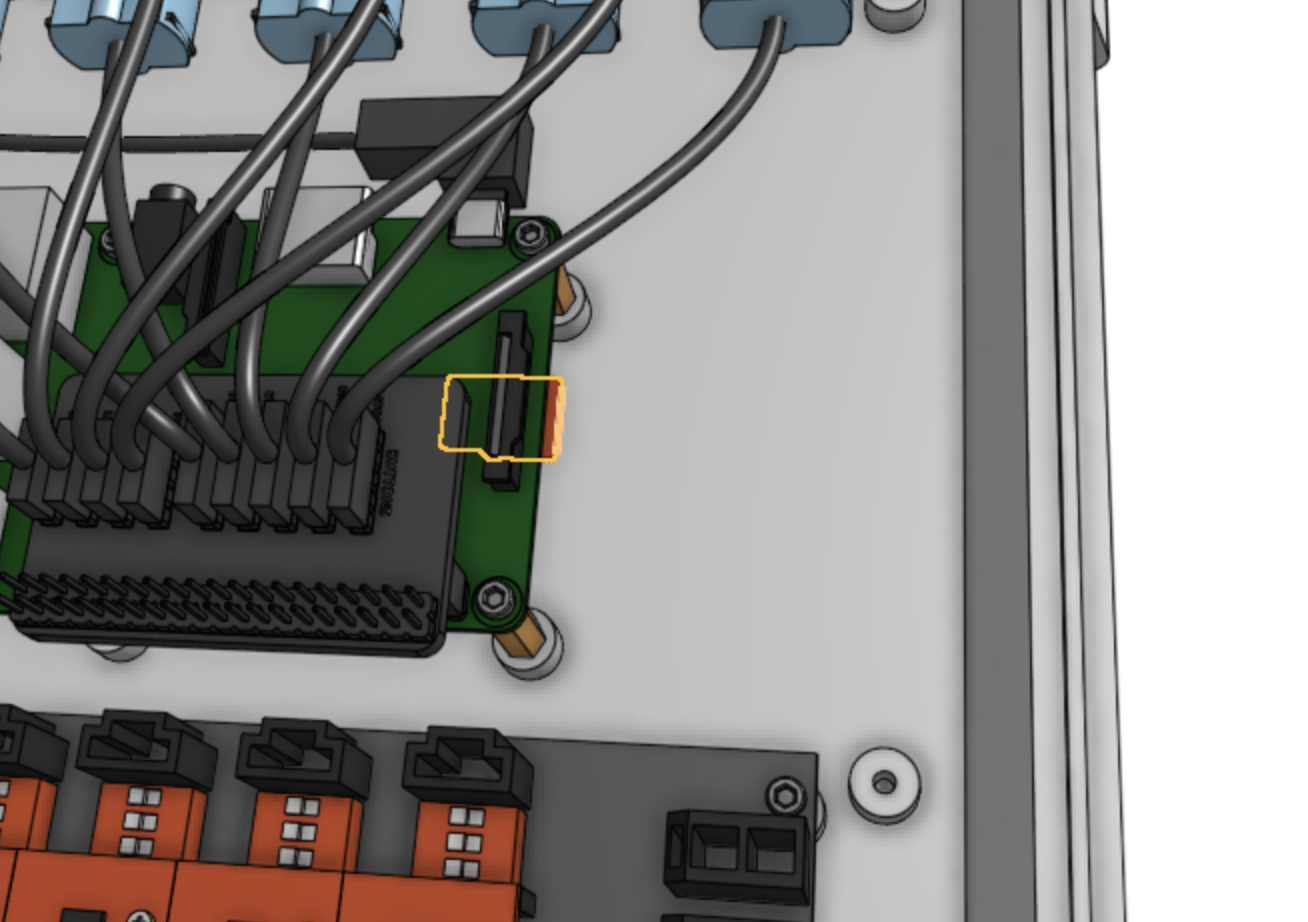FarmBot OS
Step-by-step instructions for installing FarmBot OS ![]() Video tutorial
Download the latest FarmBot OS
Video tutorial
Download the latest FarmBot OS .img file here.
The Raspberry Pi runs a custom operating system named FarmBot OS, allowing FarmBot to:
- Communicate with the web application over WiFi or ethernet so that it can synchronize (download) sequences, regimens, farm designs, events, and more; upload logs and sensor data; and accept real-time commands.
- Communicate with the Farmduino to send G and F commands and receive sensor and encoder data.
- Take photos with a USB or Raspberry Pi camera, and upload the photos to the web application.
- Get configured over WiFi, mitigating the need to plug in a mouse, keyboard, or screen.
Installing FarmBot OS
Pre-installed
FarmBot OS comes pre-installed with all Genesis v1.5+ and Express v1.0+ FarmBots. If you have an older FarmBot model or need to manually install FarmBot OS for another reason, continue reading!
Another computer is required
You will need another computer with a microSD card reader to install FarmBot OS.
Step 1: Download FarmBot OS
Download the latest FarmBot OS .img file here.
Step 2. Write FarmBot OS onto the microSD card
You must use a .img writing tool to write FarmBot OS onto the microSD card. We recommend downloading and installing Etcher for this purpose. Once you have Etcher installed, open it up and select the FarmBot OS .img file and write it to the microSD card.
Drag and drop will not work
Using your typical file browser (Finder on Mac or File Explorer on Windows) to drag and drop or copy and paste the FarmBot OS .img file onto the microSD card will not work. You must use a tool such as Etcher as described above.
Step 3. Insert the microSD card into the Raspberry Pi
Insert the microSD card into the back side of the Raspberry Pi.
No need to remove the Raspberry Pi
You do not need to remove the Raspberry Pi from the electronics box for v1.4 kits; we have left enough room to the right of the Pi for you to insert the card.

Step 4. Turn on the Raspberry Pi
Plug in the power source to the Raspberry Pi. Depending on your setup, power will be coming from either a standard microUSB cable plugged into the Farmduino (or a standalone power supply), from a DC/DC buck converter coming from your RAMPS shield, or from a DC/DC buck converter coming straight from your FarmBot’s power supply.
You should now see a solid red LED and a steadily flashing green LED on the Raspberry Pi, indicating that the Pi has adequate power and is busy booting up. Refer to the status LEDs page for more information, especially if your LEDs are not lit up as described above.